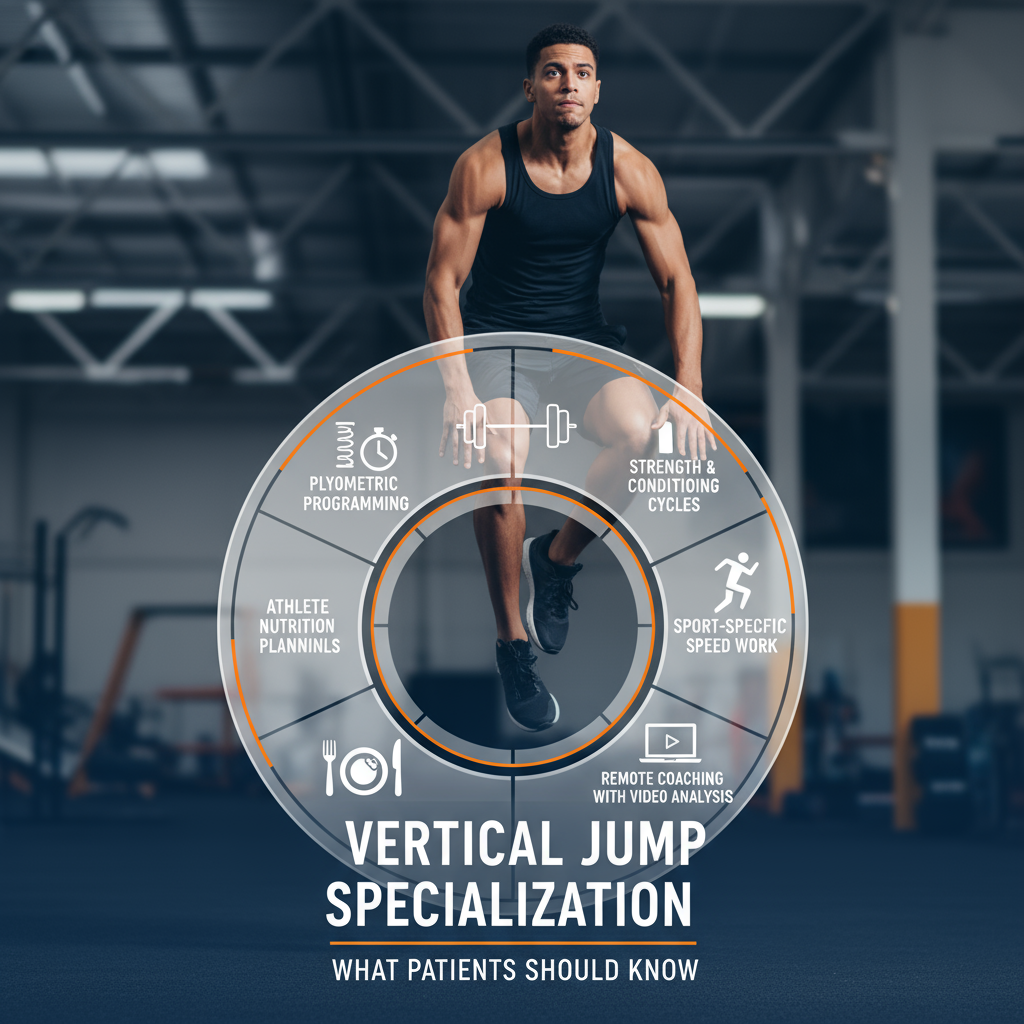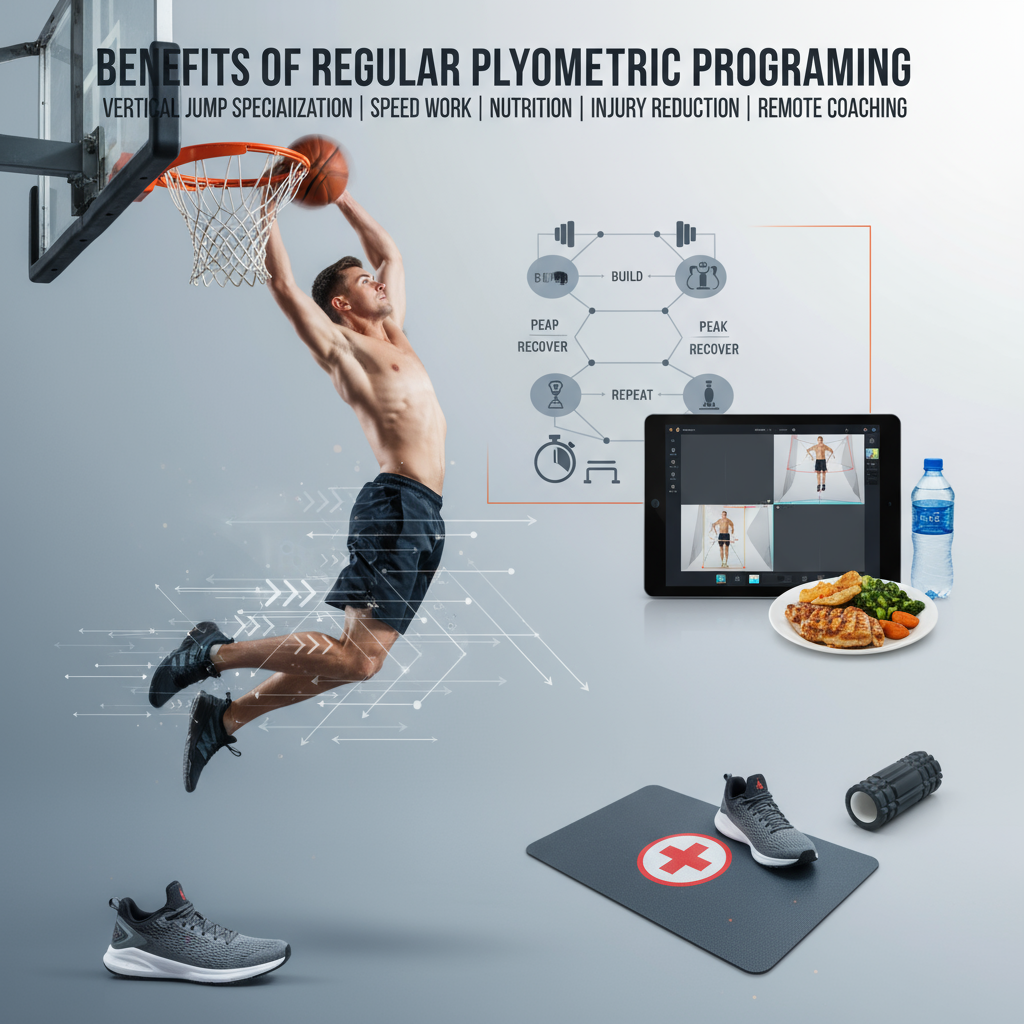Athletes, parents, and rehab patients who want a higher vertical—this is for you. You’re tired of plateaus, confusing advice, sore knees, and random “jump every day” plans that don’t work. And you’re busy. Jump High Now brings vertical jump specialization with smart plyometric programming, strength & conditioning cycles, sport-specific speed work, athlete nutrition planning, and injury risk reduction protocols—plus remote coaching with video analysis—so you can get measurable gains without guesswork.
What is vertical jump specialization?
It’s a focused block of training that prioritizes jump-specific qualities—rate of force development, stiffness, approach mechanics, and landing skill—over general fitness. Think targeted progressions, not a kitchen-sink workout.
How does plyometric programming actually build inches?
By dosing ground contacts and intensity precisely. Depth jumps, pogo series, bound-to-box combos, and approach jumps sharpen elastic recoil and speed-strength. Typical setup: 2 or 3 sessions weekly, 60–120 total contacts, short ground times (<0.20s on fast drills). Quality over fatigue.
Which strength & conditioning cycles move the needle the most?
Block your training. Accumulation (3 weeks): split squats, RDLs, core—build tissue capacity. Intensification (3 weeks): heavy singles/doubles at 85–92% 1RM on trap-bar deadlift or back squat. Peaking (2 weeks): lighter loads moved fast, French contrast. I’ve seen athletes hit a +3.5 inch PR in 8 weeks using that exact arc.
Do I need sport-specific speed work, or is jumping enough?
Speed matters because your approach sets the jump. Short 10–20m sprints, wicket runs, and penultimate-step drills teach posture and rhythm. For hoopers and volleyball players, that penultimate—money.
How long does it take to see results?
Most athletes see 3 inches in 8 weeks if they sleep, eat, and train consistently. Some hit a pop in 21 days, others lock in around week 10. Progress isn’t linear… but it’s real.

What should athlete nutrition planning include?
Protein: 2.2 g/kg bodyweight daily. Carbs around jump/strength days: ~3–5 g/kg, front-loaded pre-session. Creatine monohydrate: 5 g daily. Hydration: 20–24 oz water with electrolytes 2 hours pre-practice. Simple, boring, effective—and I mean REALLY effective.
How do you reduce injury risk without killing progress?
Use clear injury risk reduction protocols:
- Landing patterns: quiet feet, knees track toes, hips back.
- Volume caps: 90–120 jump contacts; stop if technique slips.
- Strength balance: Nordic curls, tib raises, soleus raises, Copenhagen planks.
- Ankle stiffness work: pogo series, midfoot control.
- Shin/knee care: gradual depth progressions, not hero jumps.
Look, you can push hard and stay durable—if you don’t cut corners.
Can remote coaching with video analysis really work?
Yes. With 120–240 fps clips, side/front angles, and frame-by-frame review, a coach can flag penultimate braking, torso angle, and arm timing. Jump High Now provides weekly feedback loops (cueing, tweaks, and load edits) so you improve fast without being in the same gym.
What does a simple week look like?
Now try this template:
- Day 1: Strength (heavy lower) + low-contact plyos
- Day 2: Speed/approach mechanics + core
- Day 3: Off or mobility
- Day 4: Contrast lifts + approach jumps
- Day 5: Skill day or light tempo
- Weekend: Recovery walk, soft-tissue, 8+ hours sleep
Need it tailored?
If this feels overwhelming, Jump High Now can handle testing, custom cycles, and week-to-week adjustments—so you hit the ground running without guessing, and without your knees hating you by preseason.






